Words: Hugo Gladstone | Photos: Paolo Ciaberta
Gravel didn't used to be a thing
Unless you were a Japanese gardener, the driver of a runaway lorry or a paranoid homeowner intent on hearing every footstep laid in your driveway, there wasn’t a lot to be said for gravel a few years ago. In road cycling circles especially, it sat somewhere alongside excrement as a must-avoid for 23mm tyres. Indeed, in many circumstances ‘crap’ would be an adequate synonym for loose surface material on a road. If gravel was to be spoken of amongst a bunch of typical 1990s British club cyclists, it was as a danger or nuisance: strewn stones that threatened a wipeout on a high speed corner; sharp shards waiting to pierce your matured Wolbers; fresh chippings on a lane that would do just that to the paintwork on your Columbus SL tubing. Should a road have turned into the kind of farm track that might now be fetishised as a gravel sector, a vast percentage of self-identified serious cyclists would have about-turned and gone off in pursuit of some silky asphalt.
Jump forward 20-odd years, and now a smattering of gravel has been scattered all over modern road cycling. In the last two years, all three of the Grand Tours have featured gravel road sections, while Classics Gent-Wevelgem and Paris-Tours have attempted to revitalise their fortunes by also routing in such surfaces. The roaring elevation in status of Strade Bianche has highlighted this appetite for rough stuff. It’s a race with only 13 years of history, but one that’s been fast-tracked to Monumental levels of reverence. Why is there this new obsession with gravel? How did we get here?
There's nothing new about gravel in the Tour
Just before the Tour de France made its much-hyped 1.8km foray over the Plateau des Gilères in 2018, I pulled together a short preview for the Rouleur website. Predominantly a collection of grainy Tour pictures I’d fished out of the L’Equipe archive, the premise was showing that there once was a time when gravel was all there was for road surfaces. Only with the boom of the motor vehicle, with the high speeds and distances they offered, did the demand for sealed surfaces on long stretches of rural road become economically viable. These days in heavily populated and affluent parts of Western Europe, any public road that’s not tarmacked is an anomaly – its backwards status typically the result of either unusually low demand, the legal complexities of authority highway adoption, abandonment, heritage protection or the technical difficulty and expense of upgrading the surface in remote and challenging terrain.
Putting a label on it
We call it ‘gravel’ but that’s just what we’ve arrived on at a point in space and time. Strade Bianche means white roads. In the far reaches of Brittany, where every April since 1984 they’ve held the Tro-Bro Léon, they call the rough tracks ribinoù. (What’s curious is that the word gravel itself is actually derived from the Breton language.) Sometimes it’s dirt, sometimes it’s cart tracks. Regardless, whether in the hills of Tuscany, the prairies of Nebraska, the high mountains of Kyrgyzstan, or the outback of Australia, what we’re talking about is a catch-all term for loose surfacing. And looser than that, a general attitude to take fast road-going bikes off the surfaces that have traditionally defined road cycling.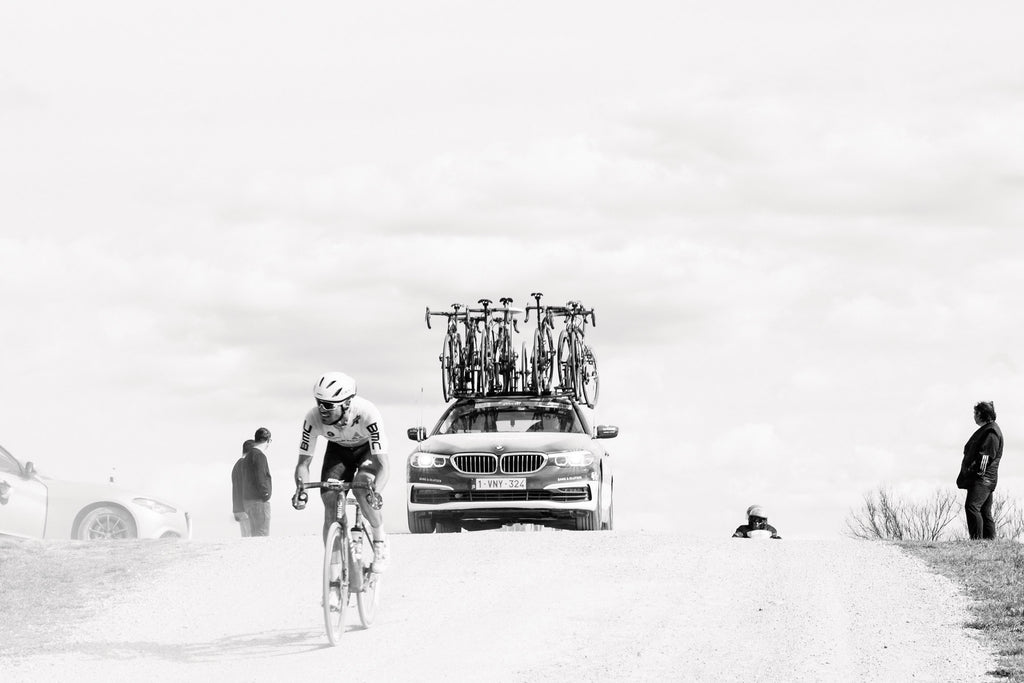
A personal timeline of gravel
Me? I’ve always ridden on gravel. My parent’s driveway is covered in the stuff… But seriously, at best I only ever used to be able to view dirt roads and farm tracks as a poor man’s substitute for the pavé of the Northern Classics. Whenever the teenage me got over-enthused by footage of racing on tiny rough roads, I’d route my rides out via a dirt track on the edge of the village. I knew it was a piss-poor excuse for cobbles, but still… Over time, my views got purer. I remember in 1997, ruling out ever returning to a great climb I’d discovered in the Monts d’Ambazac after finding a kilometre over the summit was on unsealed roads. Getting a cyclo-cross bike in 2006 started to change my view. Till then there was a clear division in my cycling: on road or off it. Suddenly I had a machine that could competently tackle both in the same ride.
Everyone has their own stories, subject to place and circumstance. One rider’s experience is as irrelevant as the next. But sometimes, with a certain critical massing, parallel histories converge. “A lot of us had a ‘cross bike before there was such a thing as a gravel bike,” says author Nick Legan of his experience living in Boulder, Colorado. “With a ‘cross bike you could take in so much more.” Legan researched the roots of the recent appetite for riding on unsealed roads for his book Gravel Cycling. What he identified was “a simultaneous uprising all over the United States” of people who were doing similar things. “In Iowa for instance, it was a lot of cross-country mountain bikers who didn’t have enough trails to train on, so they’d just go out and do their long miles on gravel.” Other scenes emerged from touring cyclists who had the big clearances for fenders and cantilever brakes. Parts of the Midwest with “vast areas of not much more than dirt roads” were a particular hotbed. “It was very adventure driven,” Legan says. “‘Let’s just go out there and see what’s in our own backyard. Find places we haven’t discovered because we’ve been stuck to manicured singletrack or pavement.’”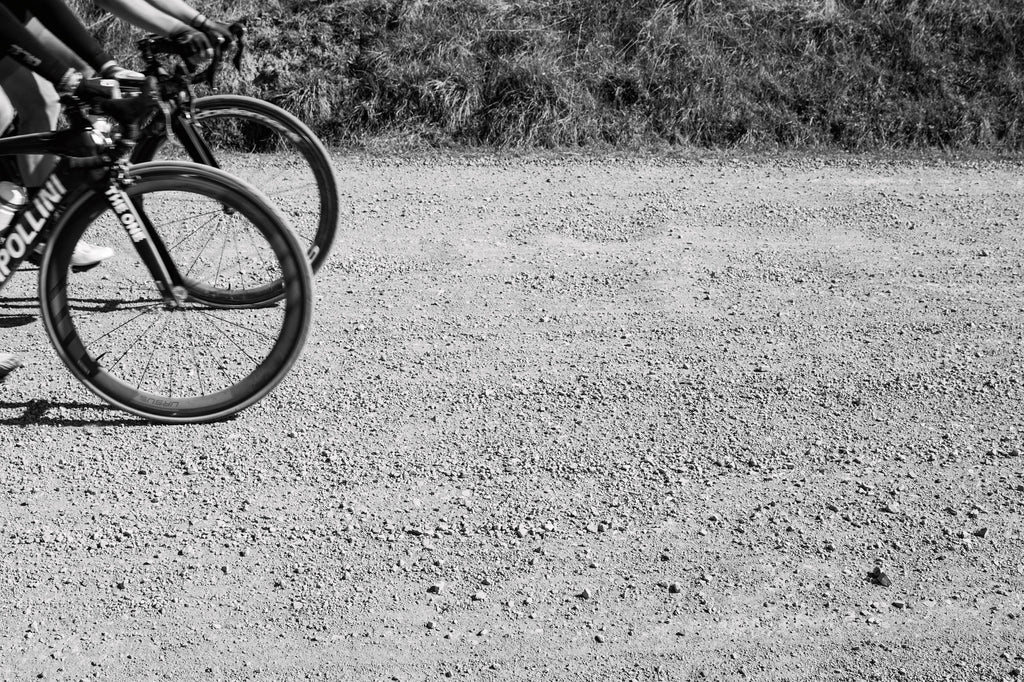
When it comes to the crunch
The story of why professional cycling has recently re-sought out these types of roads is as multi-layered and as granular as the surfaces themselves. In these post-modern times, there is no absolute truth of narrative. There are just nods to the past. Influences from difference cultures. And a variety of factors and perspectives – and sales pitches. But sometimes dispersed lumps aggregate into trends.
Inspired by the past
The funny thing about Strade Bianche is that it was born from a Gran Fondo. Typically, the relationship between racing and sportives goes the other way. The Eroica, a vintage bike ride for retro nuts, was first run in 1997, a full ten years before spawning the accompanying professional race. Initially the pair were run on the same October weekend and shared their infrastructure. But the race quickly took on a life of its own, attracting stars and captivating a public interest that extended beyond the niche but celebrated market of yesteryear re-enactment.
Of course, Eroica itself had in turn been inspired by racing. But rather than amateurs wishing to emulate contemporary riders, it harked back to the early days of Italian cycling, when heroes ripped across the dusty Italian countryside, goggles on their head, spare tyres over their shoulders. And because a network of un-upgraded gravel roads could still be found amidst the rural villas, cypress trees and sculptured hills of the lyrical Tuscan landscape, the event had an air of authenticity that captured imaginations.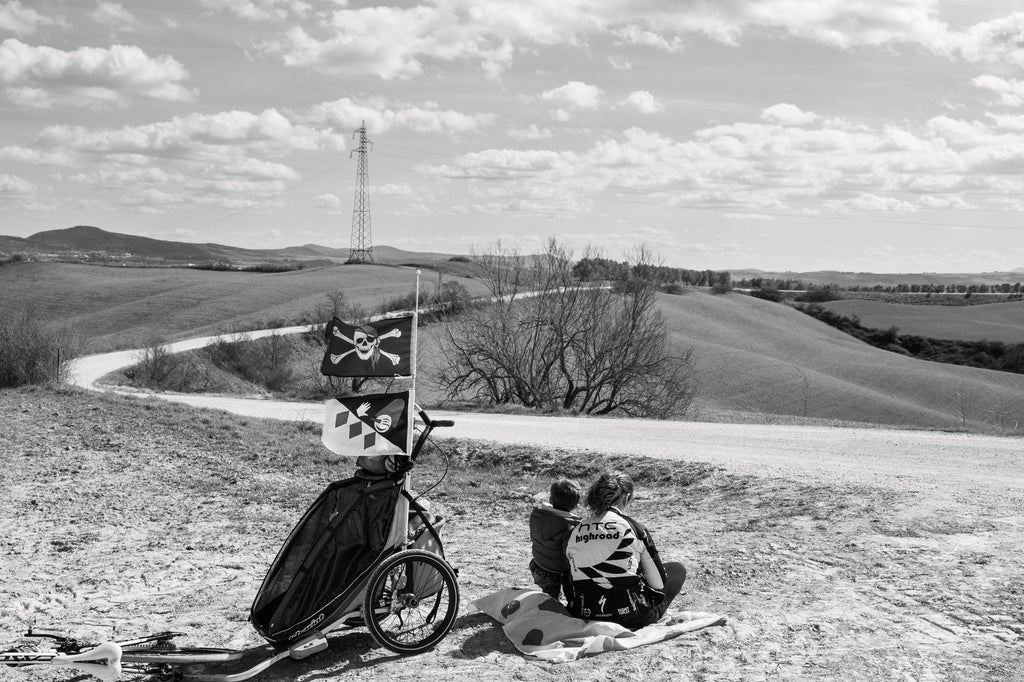
As former Central Marketing Director at Rapha, James Fairbank knows only too well the value of cycling’s rich and evocative history. In its early years, the mightily successful London-founded clothing brand built its whole pitch around the heroics and romance of road racing. Fairbank acknowledges the current interest in gravel touches on that: “There’s a purity to riding on unsurfaced roads that goes back to the origins of the sport. It recalls images from [Henri] Desgrange’s times of sending people up roads you didn’t think you could get over.” Rapha also knows pro cycling at its most modern, performance-obsessed edge, having spent four years as the clothing supplier to Team Sky. Fairbank says it was a partnership that was absolutely transformational for the business. But, he adds, “if you started with a blank sheet of paper and tried to work out a format for racing bikes, three-week Grand Tours with two hundred plus kilometre stages wouldn’t be the way to bring it together.” In Europe, history still has a fair amount of glue. However, “North America is desperately looking for an alternative way of presenting cycling as a racing sport,” he says. “[This] year there’s no Tour of California. And if [behemoth sports and entertainment company] AEG can’t make a race work using the traditional format, you know there’s something wrong.”
Rough around the edges
For Rough Stuff Fellowshippers, cyclo-cross aficionados and maverick cyclists who never were sucked along by the guff of an industry for whom only professional performance was the cutting edge, ‘gravel’ is the Emperor’s New Clothes. But in the USA, where the Lance Armstrong fairytale was slowly souring, gravel riding perhaps offered the same kind of heady pioneer spirit as the early days of mountain biking. With the mushrooming of interest, a nascent gravel racing scene emerged in places on the map that people otherwise had no reason to visit. At first it was all a bit edgy: free entry by postcard; finish at a pizza joint then drink beer to recover; a world of equipment hacks, handbuilt frames and a mishmash of kit appropriated from road, cyclo-cross, touring and mountain biking. Rapha tapped into the gravel interest with its late 2000s Continental projects. Then in 2011, Salsa bikes responded to the emerging appetite for gravel by launching its Warbird. “In my book [Gravel Cycling], I argue that was the first bike made with the concept of a gravel machine in mind,” says Nick Legan. “And I believe Salsa quietly make that claim too.” Sure, other machines geared for a more hybrid type of riding had gone before, “but Salsa called it a gravel bike,” notes Legan. “It was made for gravel, and it was a genuine departure from the cyclo-cross bike.” These days, every big manufacturer has a gravel machine in their range.
Whatever sels
What do you do if you’re the organiser of a 90-year-old bike race struggling to keep its head above water? You’ve been doing the same thing for years: the same route; the same calibre of riders; just another kermesse on the Belgian calendar. That worked fine for years, served its purpose, brought in sponsors, got the local crowds on the street. Then there’s this information revolution that disrupts some of the key things you depended on: advertising revenue, the limitations of physical location, the power hold of tradition. “We needed to bring some spectacle to the race,” says Nico Mattan, the former Gent-Wevelgem winner and technical race director for Belgium’s Schaal Sels event. So in 2015, with gravel cycling catching on and the popularity of established races like Strade Bianche drawing eyeballs, this late summer race broke from its tradition of a 14km kermesse circuit to tackle a 200km route that chucked in a bunch of cobbles and dirt sectors. “It’s really down to organiser Ben Simons,” says Mattan. “He has a lot of land in the area, we arranged to race for almost 30km on his property.” Like Tro-Bro Léon, the revised Schaal Sels took in a real mixed bag of surfaces. There was dirt, grass, sections through the service roads of a school and a comical race stoppage when one of the key race vehicles got stuck in a field of eight-foot-high maize and had to be tugged out by a tractor. It was a race of spills and drama, all the more photogenic for its backdrop of the cranes, containers, dykes and wind turbines that geometricise the northern Belgian polders. The race picked up international attention that belied its 1.1 UCI status. In 2018, it spawned a spin-off: the Antwerp Port Epic. “Yes, it’s been successful,” summarises Mattan, “but I don’t think all cycle races need to go this way. We only need five or six a year.”
The nitty gritty
The reason armchair fans like the insertion of gravel in road races is for the same reason that Paris-Roubaix and the Tour of Flanders are so popular. Technical sectors provide unpredictability and platforms for heroics. There is mud or dust, crashes and mechanicals, a proliferation of curveballs to be thrown at the story of the day. For riders who like this kind of racing, the less dependable surfaces offer opportunity to exacerbate differences in strength, exploit resilience and force mistakes from others. 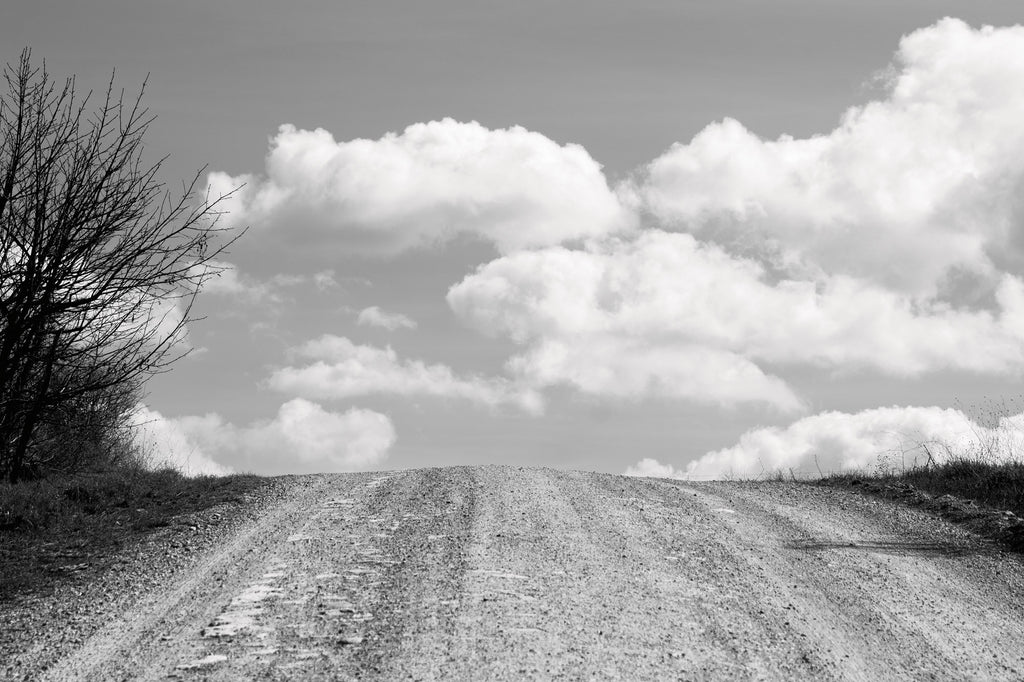
Peak gravel
2018 was a spectacular year for gravel in road races. Strade Bianche was a cracker, cold and wet, with Tiesj Benoot taking an outstanding win ahead of cycling darlings Romain Bardet and Wout van Aert, who was memorably forced to walk up the last stretch of the steep final climb to the Piazza del Campo.
It was also on Italian gravel that Chris Froome turned that year’s Giro d’Italia on its head. Having shown sub-par form for the first two weeks, Froome launched perhaps the most audacious attack of an era on the unsealed slopes of the Colle delle Finestre. It was an escape that would ultimately win him the race, but it was more the distance and boldness of the move than the surface of the road that defined it. Then came the Tour, the biggest bike race of them all, making a song and dance about its 1.8km run across the Plateau des Gilères. The section spelt a puncture and “Wacky Races moment" chase for defending champion Froome, but was of little consequence. By the time Paris-Tours came round with its picturesque diversions around the tracks of Loire Valley vineyards, the inevitable backlash had started. Even Quick Step riders were grumbling about it.
The gravel trap
Riders and teams are not blind to the pressures of why organisers are keen to include the spectacle of gravel sectors, but when just a couple of kilometres of a route can leave so much to luck, put support cars out of reach and threaten to jeopardise a whole season’s objective, the sporting value of including non-uphill sections of gravel in Grand Tours has come under considerable scrutiny. Jumbo-Visma director Addy Engels spoke out directly against them after the mishaps on a gravel section in last year’s Vuelta altered the whole dynamic of the stage. Already a brute of a mountain leg in Andorra, the Vuelta’s experiment with a fast, flat sector of gravel in the finale was a disaster. Not only did the spanner it threw in the narrative of the stage go against the flow of the rest of the day’s racing, but any drama that it may have presented was completely lost on TV audiences when inclement weather forced coverage drop-out for the entirety of the sector.
Is the future grey and granular?
The gimmicky insertion of gravel in traditional pro road races has worked wonders for some one-day events. And while the Grand Tours have also ridden the wave, it’s clear there are limitations. There may be a bigger future for the coming together of gravel riding and pro racing with the new breed of participation-focused gravel races that are booming Stateside. Events like Dirty Kanza, SBT Gravel and the Belgian Waffle Ride are now organised by professional businesses and are lapping up interest. “There are some really exciting green shoots there,” says Fairbank. Based on a marathon model where pros and amateurs ride alongside each other, and all pay a chunky entry, “you could have a revenue stream that [traditional] pro racing doesn’t have,” Fairbank says.
Such a model is not so different to Gran Fondos and events like the Cape Town Cycle Tour. However, gravel is a differentiator. Typically these races thrive in going off the beaten track and taking place in (and transforming) small rural communities where there’s not the same pressures and costs of taking road races to centres of population. Without being too technically demanding, they offer something different to roadies looking for something new. It’s a raw and exciting scene, capturing imaginations, and the riding is fun. That’s all good and well for amateurs, but where there’s money and attention, there’s also opportunity for professionals too. 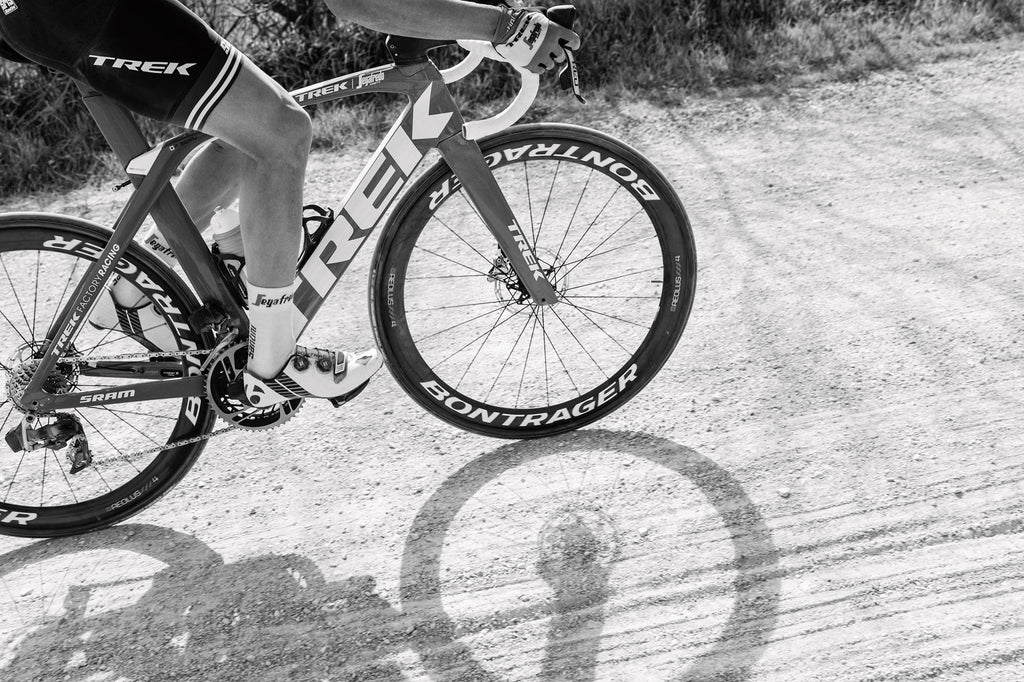
Tellingly when, after a two year hiatus, Rapha returned to WorldTour team sponsorship with EF-Education First, they were just as interested in the storytelling potential of taking workaday but personable pros like Lachlan Morton and Alex Howes to Dirty Kanza as they were in trying to set up Rigoberto Uran for the Tour de France. “A year after starting that project, it’s come to pass that the alternative calendar content has massively out-performed the content we’ve made around the traditional calendar,” says Fairbank. “We had four, five or six times more people watching our content around those events than that of Alberto Bettiol’s win in the Tour of Flanders.”
Of course, the latter event enjoys far broader and more immediate coverage in mainstream media; the relatively slow turnaround of a cycling brand's video content is not going to compete with that. But Rapha is not alone in picking up signals worth speculating on. US specialist cycling media has noted a phenomenal response to its coverage of gravel racing, whilst last November, former Trek-Segafredo rider Peter Stetina announced his decision to step away from WorldTour racing to fully focus on this scene as a privateer. Sure, the interest is still niche and contained within cycling circles. But these events are fresh, growing, and offer an alternative to a traditional model of racing that faces ever-increasing challenges.































